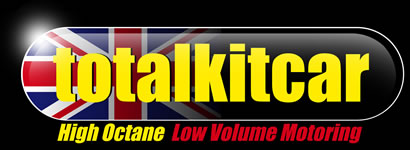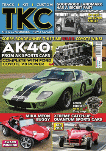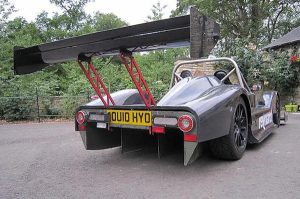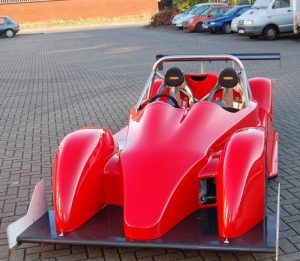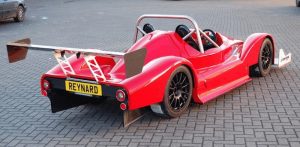UPSIDE DOWN – THE REYNARD INVERTER. ADRIAN REYNARD’S KITCAR by STEVE HOLE pix by Carol Hardy
The name Adrian Reynard is a legendary one in the motorsport world. A brilliant engineer, Reynard born in 1951 in Welwyn, had always been fond of racing and specialist cars. Indeed, his first racing car, aged 18, was a Ginetta G18B for FF1600, although he bent it at Brands Hatch, before patching it up and quickly selling it.
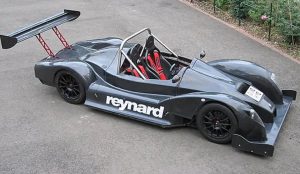
This would lead to him producing his own eponymous racing cars and enjoying a glittering career.
In the mid-eighties, during the height of his company’s success, Reynard found time to produce a chassis, or rather a revision of the existing one, for Adrian Cocking of LR Roadsters and his Ram Cobra Replica.
Among his other projects, Reynard was running a half-scale wind tunnel facility in Indianapolis called Auto Research Centre.
It was 2009 when Reynard, decided to build a road-legal, two-seat bike-powered road-legal sportscar called the Inverter. He joined forces with a young engineer called Andre Brown. They set up a new company called Reynard Racing Cars to make and sell them.
Adrian wanted to do it as a bit of fun and called it his ‘hobby’ and a ‘semi-retirement project’ and ‘not a new car company’ on launch but he was pleasantly impressed with how it worked on track. He even reactivated his racing licence to race it himself in the 750 Motor Club’s Bikesports series.
Beautifully built, as you’d expect, it featured a laser-cut, CNC-bent, TIG-welded stainless steel spaceframe chassis, with honeycomb composite side panels and additional reinforcement and rigidity from an outer lamination of a composite material called Tegris.
The nosecone area was made from aluminium honeycomb with frontal side protection that had been tested for structural integrity by Cranfield University.
The first Inverter was powered by a Honda Fireblade engine. Reynard wrote enthusiastically about the car stating that it was incredibly quick, flat almost everywhere, on most circuits, but had so much grip it was too easy. He and Brown then built a second one with a Suzuki Hayabusa engine.
The suspension was Lotus Elise-derived and was by wishbones and fabricated alloy uprights. A Quaife ATB diff helped get the power down, while drive was via a belt rather than a more conventional chain and sprocket. For road use, there was an electronic reverse gear with a sprag clutch.
Reynard wanted to get an idea of how bike-powered sportscars worked so, he bought a secondhand Fisher Fury ‘Blade’ and bike engine cars don’t come much better than that. Such is his reputation and standing that he was given an area of the Honda F1 workshop in which to build the early Inverters.
Brown, a very talented designer, in his own right, was ex-Bath University and had first met Reynard while the pair were part of an MIA mission to the Middle East in 2004.
Andre Brown put his engineering degree to good use and had previously founded a company called Hartham to undertake racecar design and development. Fresh from 18 months in US racing based at Reynard’s Auto Research Centre, he built a Caterham Seven on his return to the UK.
Reynard and Brown gelled very well and set about devising the Inverter and Andre created the fixed body surfaces from a wind tunnel model. Brady Fabrications of Bicester fabricated the chassis and all metal parts.
In 2011, Adrian Reynard won several races in the Inverter in Bikesports and enjoyed further success for several seasons culminating with him winning the championship outright and Class A category in 2014.
That same year, the first road-legal Inverter passed its IVA test. Several more builders have subsequently also put their Inverters on the road, incidentally. Reynard maintained that it had so much downforce and grip that it could theoretically be driven upside down, hence the Inverter name. Not sure if anyone ever put that to the test, mind.
It certainly produced a shed-load of downforce though. A colossal 1200kg, while it could achieve 3g cornering, while it weighed a featherweight 440kg. The standard engine was a Honda Fireblade producing 180bhp. Prices started at £35,000.
It was still technically possible to buy an Inverter kit until fairly recently and I suspect around a dozen have been sold thus far.
